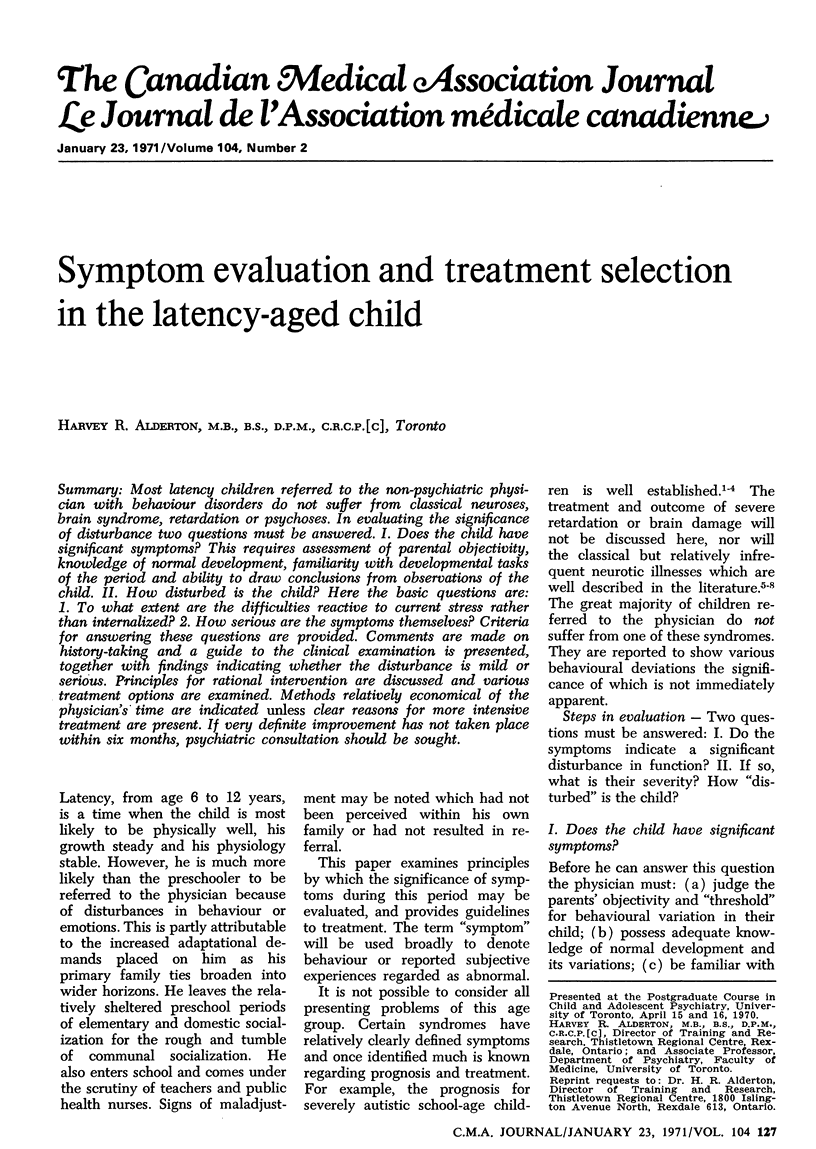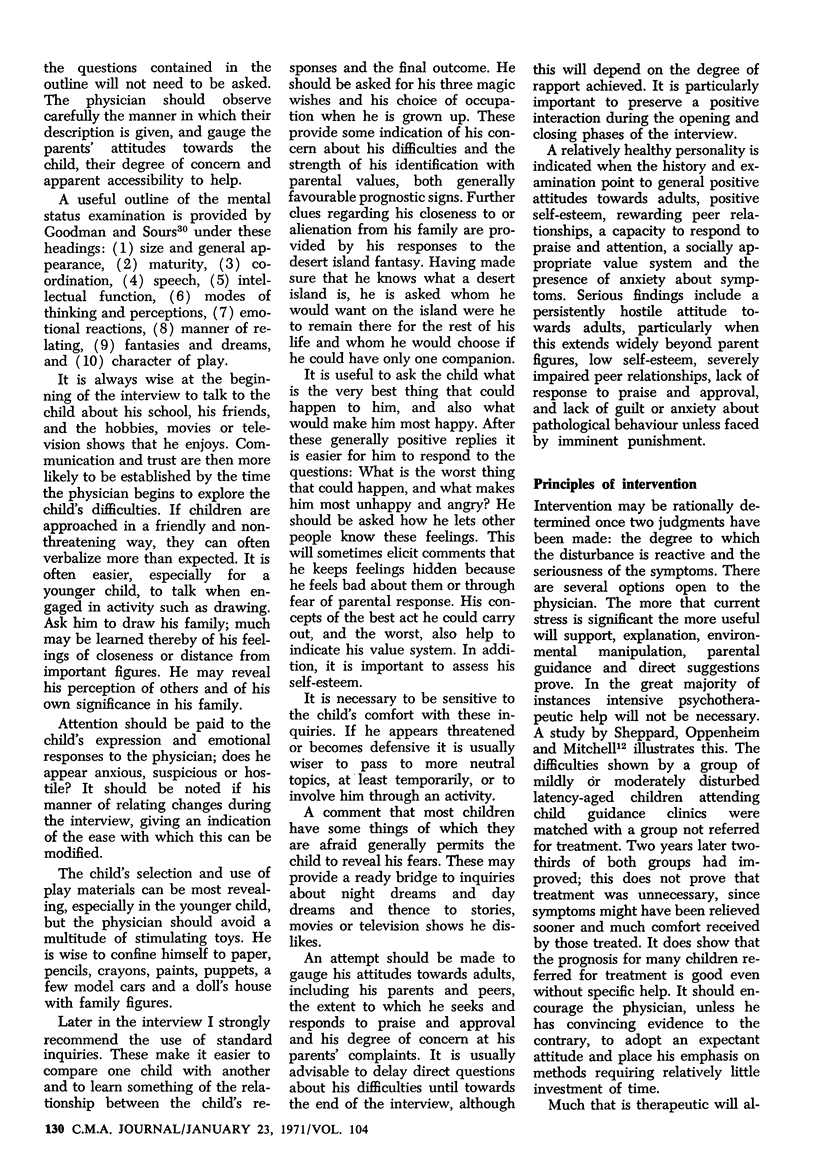Abstract
Most latency children referred to the non-psychiatric physician with behaviour disorders do not suffer from classical neuroses, brain syndrome, retardation or psychoses. In evaluating the significance of disturbance two questions must be answered. I. Does the child have significant symptoms? This requires assessment of parental objectivity, knowledge of normal development, familiarity with developmental tasks of the period and ability to draw conclusions from observations of the child. II. How disturbed is the child? Here the basic questions are: 1. To what extent are the difficulties reactive to current stress rather than internalized? 2. How serious are the symptoms themselves? Criteria for answering these questions are provided. Comments are made on history-taking and a guide to the clinical examination is presented, together with findings indicating whether the disturbance is mild or serious. Principles for rational intervention are discussed and various treatment options are examined. Methods relatively economical of the physician's time are indicated unless clear reasons for more intensive treatment are present. If very definite improvement has not taken place within six months, psychiatric consultation should be sought.
Full text
PDF





Selected References
These references are in PubMed. This may not be the complete list of references from this article.
- Alderton H. R. Psychiatric disorder in the academically failing child. Appl Ther. 1967 Aug;9(8):667–671. [PubMed] [Google Scholar]
- EISENBERG L., GILBERT A., CYTRYN L., MOLLING P. A. The effectiveness of psychotherapy alone and in confunction with perphenazine or placebo in the treatment of neurotic and hyperkinetic children. Am J Psychiatry. 1961 Jun;117:1088–1093. doi: 10.1176/ajp.117.12.1088. [DOI] [PubMed] [Google Scholar]
- JUDD L. L. OBSESSIVE COMPULSIVE NEUROSIS IN CHILDREN. Arch Gen Psychiatry. 1965 Feb;12:136–143. doi: 10.1001/archpsyc.1965.01720320024003. [DOI] [PubMed] [Google Scholar]
- LAPOUSE R., MONK M. A. An epidemiologic study of behavior characteristics in children. Am J Public Health Nations Health. 1958 Sep;48(9):1134–1144. doi: 10.2105/ajph.48.9.1134. [DOI] [PMC free article] [PubMed] [Google Scholar]
- LAPOUSE R., MONK M. A., STREET E. A METHOD FOR USE IN EPIDEMIOLOGIC STUDIES OF BEHAVIOR DISORDERS IN CHILDREN. Am J Public Health Nations Health. 1964 Feb;54:207–225. doi: 10.2105/ajph.54.2.207. [DOI] [PMC free article] [PubMed] [Google Scholar]
- O'NEAL P., ROBINS L. N. The relation of childhood behavior problems to adult psychiatric status: a 30-year follow-up study of 150 subjects. Am J Psychiatry. 1958 May;114(11):961–969. doi: 10.1176/ajp.114.11.961. [DOI] [PubMed] [Google Scholar]
- PROCTOR J. T. Hysteria in childhood. Am J Orthopsychiatry. 1958 Apr;28(2):394–407. [PubMed] [Google Scholar]
- Rutter M., Graham P. Psychiatric disorder in 10- and 11-year-old children. Proc R Soc Med. 1966 Apr;59(4):382–387. doi: 10.1177/003591576605900422. [DOI] [PMC free article] [PubMed] [Google Scholar]
- Rutter M., Greenfeld D., Lockyer L. A five to fifteen year follow-up study of infantile psychosis. II. Social and behavioural outcome. Br J Psychiatry. 1967 Nov;113(504):1183–1199. doi: 10.1192/bjp.113.504.1183. [DOI] [PubMed] [Google Scholar]
- Werry J. S. Developmental hyperactivity. Pediatr Clin North Am. 1968 Aug;15(3):581–599. doi: 10.1016/s0031-3955(16)32162-9. [DOI] [PubMed] [Google Scholar]
- Werry J. S. Enuresis--a psychosomatic entity? Can Med Assoc J. 1967 Aug 12;97(7):319–327. [PMC free article] [PubMed] [Google Scholar]


